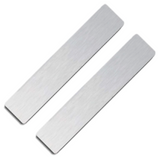Mastering Your Compressor: How to Set the Perfect Pressure for Any Job
One of the most frequent questions we hear at Master Tool Repair is: "What pressure should my air compressor be set at?" It's a great question, and the answer isn't a simple one-size-fits-all number. The ideal pressure for your air compressor depends entirely on the tools you're using and the task at hand. Setting it correctly is crucial for tool performance, safety, and even the longevity of your compressor and its parts.
Understanding the Basics: PSI and CFM
Before we dive into specific pressure settings, let's clarify two critical terms:
- PSI (Pounds per Square Inch): This is the unit that measures the force of the air being delivered by your compressor. When you adjust the regulator on your compressor, you're primarily setting the PSI.
- CFM (Cubic Feet per Minute): This measures the volume of air an air tool requires to operate continuously, or the volume of air your compressor can produce. While PSI is about force, CFM is about how much air the tool "drinks."
Why Can't I Just Set It to Max PSI?
It's tempting to just crank your compressor to its maximum pressure, but this can lead to several problems:
- Tool Damage: Over-pressurizing air tools can significantly reduce their lifespan or even cause immediate damage.
- Safety Hazards: Tools operating at excessive pressure can become unpredictable, increasing the risk of injury from flying debris or tool malfunction.
- Wasted Energy: Your compressor will work harder and run longer to maintain unnecessarily high pressure, leading to higher energy bills and increased wear on components.
- Subpar Results: For delicate tasks like painting, too much pressure can lead to uneven application or overspray.
How to Determine the Right Pressure for Your Tools
Every air tool has a recommended operating pressure, usually listed in the tool's manual or stamped directly on the tool itself.
Here's your step-by-step guide:
- Check Your Tool's Specifications: Look for the "recommended operating pressure" or "MAX PSI" on the tool or in its instruction manual. This is your primary reference.
- Locate Your Compressor's Regulator: Most air compressors have a pressure regulator knob or dial, usually located near the pressure gauges. One gauge shows the tank pressure, and the other (adjustable) gauge shows the regulated output pressure.
- Connect Your Tool: Attach your air tool to the compressor's air hose.
- Adjust the Regulator (While the Tool is Idle): With the tool connected but not actively in use, slowly adjust the regulator.
- Start Lower: It's always safer to start at a lower PSI and increase it gradually until the tool operates efficiently.
- Match or Slightly Exceed Tool Requirement: Set the regulator to match the tool's recommended PSI. For tools with continuous air requirements (like grinders or sanders), you might set the regulator slightly above the tool's stated PSI (e.g., 5-10 PSI higher) to compensate for pressure drop across the hose and fittings. This helps ensure the tool gets its actual required PSI under load.
- Test and Fine-Tune: Activate the tool and observe its performance. Is it working effectively? If not, make small adjustments up or down until you achieve optimal operation.
- Switching Tools: Remember to readjust your compressor's pressure every time you switch to a different air tool, as each tool will have its own specific requirements.
Common Air Tool Pressure Ranges (General Guidelines):
- Brad Nailers/Finish Nailers: 70-90 PSI
- Staple Guns: 70-90 PSI
- Framing Nailers: 80-120 PSI
- Impact Wrenches: 90 PSI (may need more volume/CFM)
- Air Sanders/Grinders: 90 PSI (high CFM demand)
- Paint Spray Guns: 20-50 PSI (HVLP), 40-70 PSI (Conventional) – highly dependent on gun and paint viscosity
- Blow Guns: 40-60 PSI
- Tire Inflators: Varies depending on tire type (e.g., car tires usually 30-40 PSI, truck tires higher)
When Your Compressor Can't Keep Up (It's About CFM!):
If your compressor is running constantly and struggling to maintain pressure even though your PSI is set correctly, it's likely a CFM issue. Your compressor isn't producing enough volume of air for the tool's continuous demand. This isn't about adjusting PSI; it's about needing a compressor with a higher CFM rating or a larger air tank.
Maintaining Your Compressor for Optimal Pressure Delivery:
Proper maintenance ensures your compressor can consistently deliver the pressure you need. This includes:
- Draining the Tank: Prevents rust and ensures tank capacity.
- Checking Air Filters: Clean or replace regularly for proper airflow.
- Inspecting Hoses and Fittings: Look for leaks that can cause pressure drops.
At Master Tool Repair, we have all the replacement parts you need to keep your air compressor running at its peak, ensuring you always have the right pressure for the job.
Setting your air compressor to the correct pressure is a fundamental skill for anyone using air tools. By understanding the specifications of your tools and properly utilizing your compressor's regulator, you'll ensure safe operation, maximize tool performance, and extend the life of your valuable equipment.
Got more questions about your air compressor? Don't hesitate to contact the experts at Master Tool Repair!
Recent Posts
-
The Benefits of Synthetic Air Compressor Oil: Why It's Worth the Investment
Your air compressor is a powerhouse, an indispensable tool that keeps your business running. Yet, th …Nov 11, 2025 -
Replacing Your Air Compressor's Reed Valves to Restore Peak Power
If your air compressor is running sluggishly, struggling to reach maximum PSI, or taking forever to …Nov 5, 2025 -
Air Compressor Regulators: Advanced Troubleshooting Beyond Just "Adjustment"
Every air compressor user knows the standard fix for fluctuating line pressure: turn the regulator k …Oct 27, 2025




